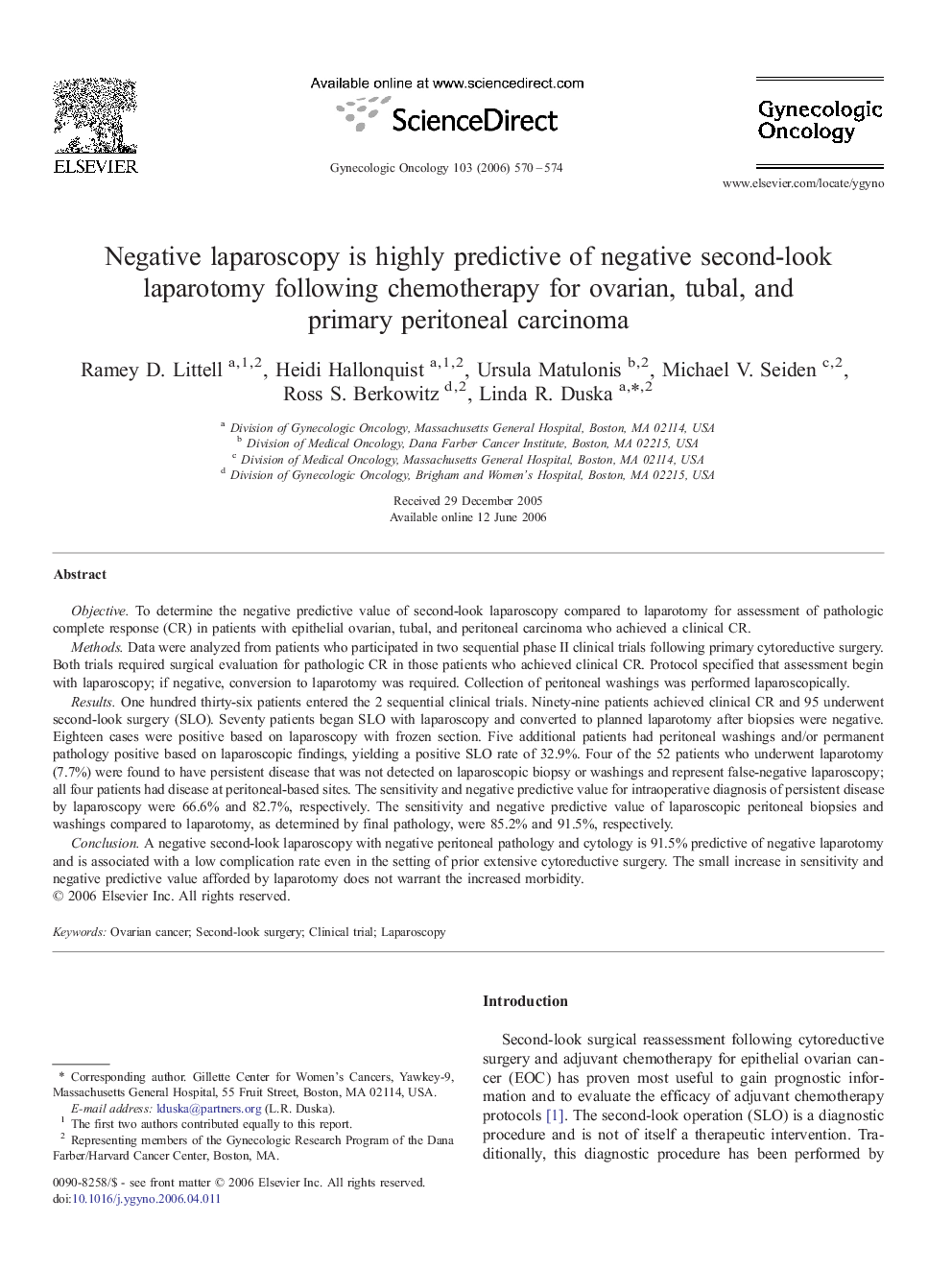| Article ID | Journal | Published Year | Pages | File Type |
|---|---|---|---|---|
| 3943809 | Gynecologic Oncology | 2006 | 5 Pages |
Objective.To determine the negative predictive value of second-look laparoscopy compared to laparotomy for assessment of pathologic complete response (CR) in patients with epithelial ovarian, tubal, and peritoneal carcinoma who achieved a clinical CR.Methods.Data were analyzed from patients who participated in two sequential phase II clinical trials following primary cytoreductive surgery. Both trials required surgical evaluation for pathologic CR in those patients who achieved clinical CR. Protocol specified that assessment begin with laparoscopy; if negative, conversion to laparotomy was required. Collection of peritoneal washings was performed laparoscopically.Results.One hundred thirty-six patients entered the 2 sequential clinical trials. Ninety-nine patients achieved clinical CR and 95 underwent second-look surgery (SLO). Seventy patients began SLO with laparoscopy and converted to planned laparotomy after biopsies were negative. Eighteen cases were positive based on laparoscopy with frozen section. Five additional patients had peritoneal washings and/or permanent pathology positive based on laparoscopic findings, yielding a positive SLO rate of 32.9%. Four of the 52 patients who underwent laparotomy (7.7%) were found to have persistent disease that was not detected on laparoscopic biopsy or washings and represent false-negative laparoscopy; all four patients had disease at peritoneal-based sites. The sensitivity and negative predictive value for intraoperative diagnosis of persistent disease by laparoscopy were 66.6% and 82.7%, respectively. The sensitivity and negative predictive value of laparoscopic peritoneal biopsies and washings compared to laparotomy, as determined by final pathology, were 85.2% and 91.5%, respectively.Conclusion.A negative second-look laparoscopy with negative peritoneal pathology and cytology is 91.5% predictive of negative laparotomy and is associated with a low complication rate even in the setting of prior extensive cytoreductive surgery. The small increase in sensitivity and negative predictive value afforded by laparotomy does not warrant the increased morbidity.
